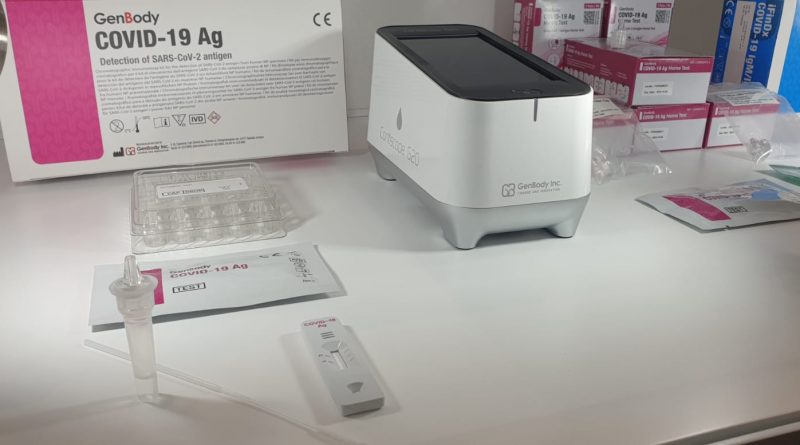Detection of SARS-CoV-2 Antigen
General description
Direct detection of SARS-CoV-2 viral proteins (antigens) in nasal swabs and other respiratory secretions using lateral flow immunoassays (also known as rapid diagnostic tests, RDTs) offers a faster and less expensive method of detecting SARS -CoV-2 than the reference method, nucleic acid amplification tests (NAAT).
This interim guidance provides recommendations on the priority uses of rapid antigen detection diagnostic tests (Ag-RDTs) in specific populations and settings, including (i) for primary case detection in symptomatic persons suspected of being infected and asymptomatic persons with high risk of COVID -19, (ii) for contact tracing, (iii) during outbreak investigations, and (iv) to monitor disease incidence trends in communities. Ag-RDTs that meet the minimum performance requirements can be used outside of clinical and laboratory settings, including in communities, by trained operators according to instructions. The guide also provides recommendations on deployment, product selection, and storage.
Key points
- This interim guidance is intended for healthcare providers who order antigen tests, receive antigen test results, or perform point-of-care testing, as well as laboratory professionals who perform antigen testing in a laboratory setting or at the point of care and report those results.
- The purpose of this interim technical guidance is to support the effective clinical and public health use of antigen tests for different testing situations.
- This guidance applies to all clinical and culturally sensitive, accessible, and consumer-available uses of antigen tests and is not specific to any particular age group.
- This guidance incorporates considerations for people who are fully vaccinated and should be used in conjunction with CDC’s interim public health recommendations for fully vaccinated people.
Regulatory requirements for the use of antigen tests for SARS-CoV-2
The FDA regulates in vitro diagnostic devices and has provided recommendations and information about US applications for COVID-19 diagnostic tests in the 2019 Policy for Testing for Coronavirus Disease During the Public Health Emergency (Revised) ( “COVID-19 Testing Policy”)external icon and the US templates referenced in that policy. COVID-19 tests and test systems used for diagnostic or screening tests, including antigen tests, must have received an FDA Use Authorization or be offered in accordance with the policies in the FDA Policy. FDA for COVID-19 testing external icon. Each SARS-CoV-2 antigen test cleared for use by the FDA is included on the FDA list of US in-vitro diagnostics external icons.
The intended use of each test, available in the Instructions for Use and Letter of Authorization, defines the population in which the test is intended to be used, the types of samples acceptable, and how the results should be used. Laboratory and testing professionals who screen or diagnose for SARS-CoV-2 with antigen tests must also comply with the Clinical Laboratory Improvement Amendments (CLIA) regulations. Any laboratory or testing facility that intends to report a patient’s specific test results to an individual or health care provider must first obtain a CLIA certificate and meet all requirements to perform that test.

